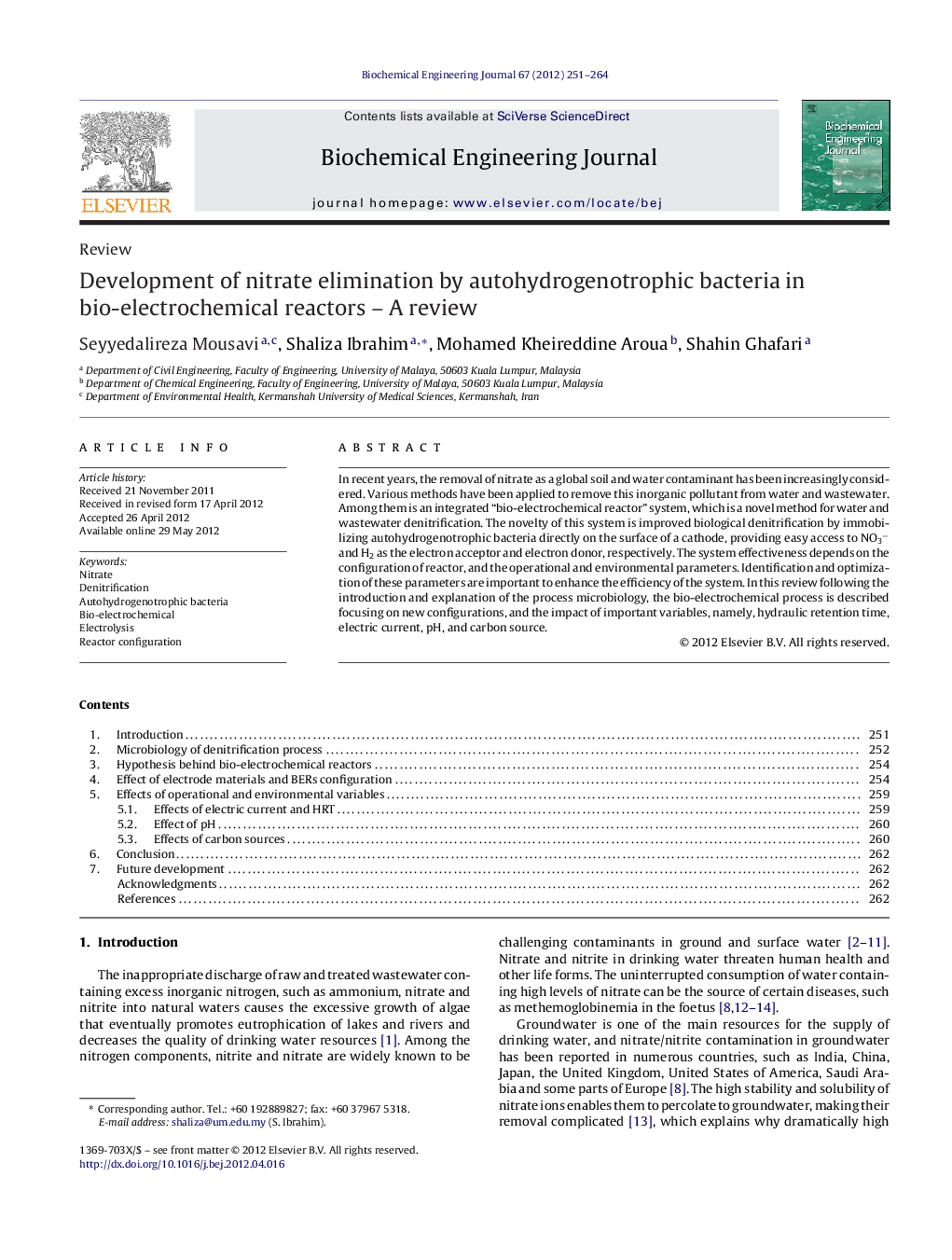| کد مقاله | کد نشریه | سال انتشار | مقاله انگلیسی | نسخه تمام متن |
|---|---|---|---|---|
| 3528 | 173 | 2012 | 14 صفحه PDF | دانلود رایگان |

In recent years, the removal of nitrate as a global soil and water contaminant has been increasingly considered. Various methods have been applied to remove this inorganic pollutant from water and wastewater. Among them is an integrated “bio-electrochemical reactor” system, which is a novel method for water and wastewater denitrification. The novelty of this system is improved biological denitrification by immobilizing autohydrogenotrophic bacteria directly on the surface of a cathode, providing easy access to NO3− and H2 as the electron acceptor and electron donor, respectively. The system effectiveness depends on the configuration of reactor, and the operational and environmental parameters. Identification and optimization of these parameters are important to enhance the efficiency of the system. In this review following the introduction and explanation of the process microbiology, the bio-electrochemical process is described focusing on new configurations, and the impact of important variables, namely, hydraulic retention time, electric current, pH, and carbon source.
► We focus in this review on new innovative designs of BERs to eliminate of nitrate.
► The review explains the effects of operational and environmental factors on BERs.
► Selecting a suitable structure and configuration increases the efficiency of BERs.
► The environmental parameters play key role in efficiency of BERS.
Journal: Biochemical Engineering Journal - Volume 67, 15 August 2012, Pages 251–264